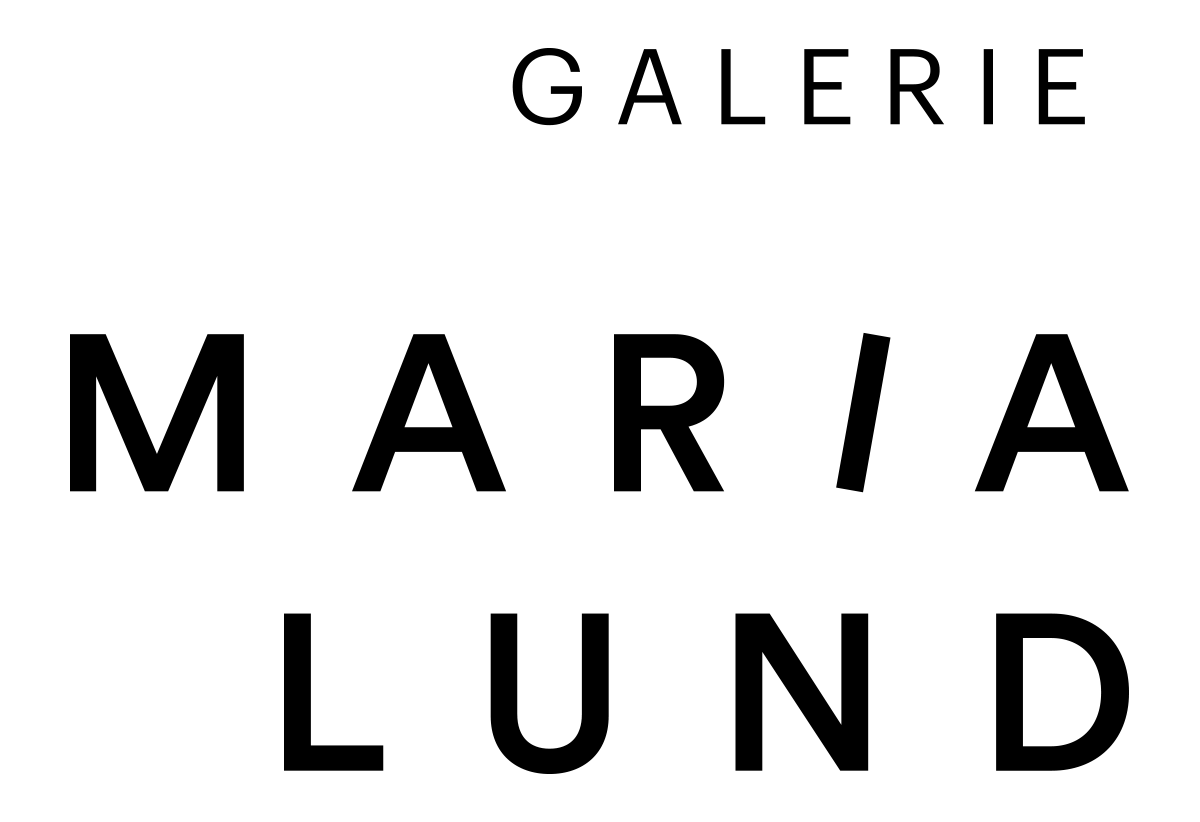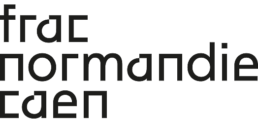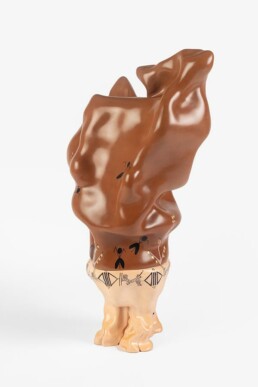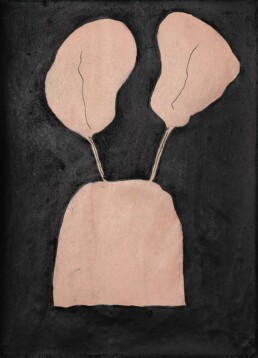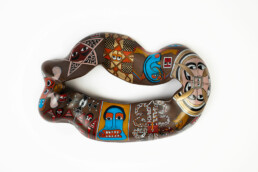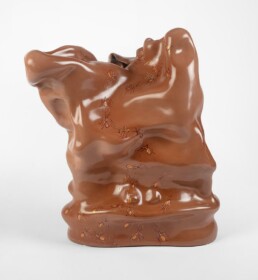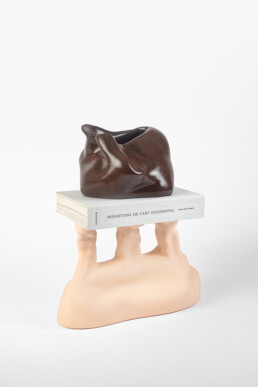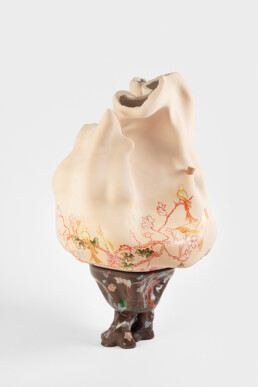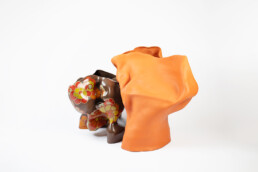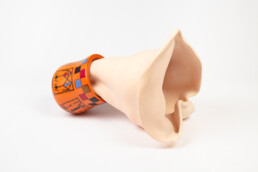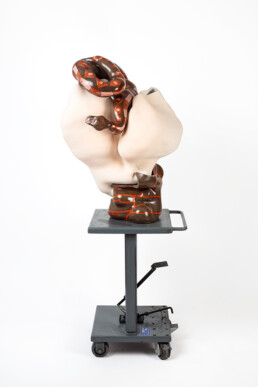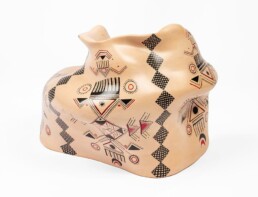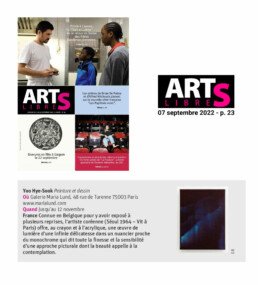Presentation
Farida Le Suavé’s ceramic sculptures have been formed and marked by mythological times and borrowings from various historical human civilisations. The artist belongs to her time, whilst simultaneously surpassing it. Archaism and contemporaneity are closely intertwined in her works, rich with a delicately balanced suggestivity. Her forms have an undeniable human echo; they are languorous, eager, skilful and clumsy, tragic, funny, sensual and sometimes suffering. An ambiguity is introduced by the orifices, which refer back to the object-container. The artist seizes upon this ambiguity and diverts it by endowing the works with their own breath.
The colour of the clay is that of the skin – white, red, black… the sculptures’ texture is smooth, silky like a dermis. Certain pieces present undulating ornaments, signs and symbols on their surfaces, drawn in coloured pencil like tattoos. We can discern landscapes, rhythms and incantations. The drawings, rebuses and puzzles on paper, which Farida Le Suavé has been creating since childhood, find a new ground here. They become one with her three-dimensional works, as the cave paintings of our ancestors became one with the walls of the underground world that hosted them.
Panser
Elora Weill-Engerer
Here, the belly is slumped, the lips loose and the totality splayed on the ground like jowls heated by the sum of spewed words. There, the feet are paws, supporting a curved and fertile mass which seems poised to come to life. It is an opportunity to recall the eminently corporeal dimension of the vocabulary associated with pottery (neck, bottom, belly, shoulder), and also a way to indicate the mystical presence of Farida Le Suavé’s ceramics. This object that has served, given birth and poured out its contents leaves a void that only thought can fill. Although it retains the memory of centuries-old containers deployed around the Mediterranean (jars, amphoras, dolia, kraters), its form responds to the authority of the hands and the organic breath alone: swellings indicate that something is moving inside.
In the practice of ornamentation, it is common to indicate the function of the object by a precise form and by the inscription of multiple details on its surface: containers devoted to libations or to the conservation of wine, oil or milk will therefore present different aspects. In Farida Le Suavé’s work, this observation takes on an organic dimension: feeling physically what is perceived visually. These gravid ceramics shape after they have been shaped – do we create in order for this creation (or creature) to act on us? They mirror the effect of their function, as if they had been materially transformed by the action they were created for. Their anthropomorphism is accentuated, since they are presented from an empathetic perspective, the one from which we naturally consider everything that seems endowed with affects. Especially since the smooth, soft texture of the fine clays used by the artist and their shades, ranging from dark brown to light beige, make the surface reminiscent of skin. And the role of colour does not preclude that of drawing. For Farida Le Suavé, ceramics are an extension of the practice of drawing, the line of which is made manifest in two ways: firstly, in the motifs of arabesques or Berber and Coptic signs, drawn in pencil like tattoos on these reddish-purple clay volumes; and secondly, by the very line of the form, cut to the quick in the breaking of the shards.
From the envelope to the structure, Farida Le Suavé’s ceramics therefore challenge the relationship between the ornamental and the non-ornamental as that between the useless and the necessary. In colonial and progressive thinking, ornamentation was the prerogative of peoples without writing. Associated with seduction and femininity, it was not to be confused with the subject, whose essential function was to produce meaning. The recurrence of the ornament’s defining motif was seen as the mark of the craftsman rather than that of the artist. Its aim was to be decorative, that is to suit (decere), or, literally, to arrive at the same point as the main subject. Against this Platonic thinking which denounces adornment as vulgar, useless, superficial and distinct from beauty, Farida Le Suavé’s work places the ornament in the context of universal and magical language. It does not refer to adornment in the sense of “decoration” but in the more secondary sense of protection, which “shields” the individual from the evil eye. The ornament becomes a surviving sign, enabling us to link formlessness back to reality and to anchor it in a narrative.
Translated from French by Juliet Powys
In pictures
Agenda
Opening
Pré-histoires
Thursday 17.11.202217:00 > 20:30Galerie Maria Lund
Sunday Opening
Sunday 27.11.202214:00 > 18:00Galerie Maria Lund
